Stoinia during the Great War (Pacifica)
This article needs to be updated. The reason given is: Missing categories and non-standard formatting. (May 2024) |
Background
Similar to the Sub-Capricorn, the sub-equatorial region above the tropic of Capricorn colloquially also known as the middle of the South Pacific Ocean, saw the rise of political turmoil as well. In northeastern Cordilia, the Father States took control over the Ikaranarean states and Pastrala in 1880. Upset about the failures of the Triangular Empire, they had overthrown the governments of Ikarn, Narus and Ranaras, forcing the royals to flee to Reizen in the Frost Empire. In the Father States, expansionism was a means of acquiring new populations to increase production. Eventually, the Father States would be able to lift the burden of production off of the Indavral populations and instead on to other populations. Indavra was already rich in resources, but the labor of production could be pushed onto less resource rich areas. However, their first course of action was to "Restore their natural borders." This culminated in the annexation of Constadia and Tzardas (Tarnese: Țardaș), two Stoinian exclaves in 1932 and a full scale invasion of Losavra in 1945, leading to the capitulation and annexation of the country of more than 100 million in just 2 weeks. In 19XX, they signed a nonaggression pact with the Frankists and started militarizing more and more, building up all branches of the military for what they assumed would be a major war as they prepared for an invasion of Cadíæ following its civil war and Nea-gy.
Stegăroian Deterrence
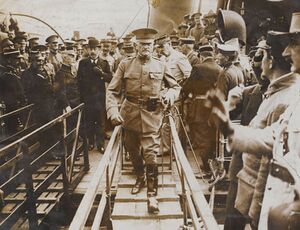
The Kingdom of Stoinia, saw a period of rapid military modernisation between the 1930s & 1940s under General Andrei Stegăroiu who was appointed Chief of Defence Staff in late 1932. The modernisation was motivated in large part because of heightened tensions with neighbouring states following the Marsh Wars with Ezervulge and annexation of Constadea and Țardaș by the Father States following skirmishes in 1932. Stoinia under the King Mihai III saw the centralisation of leadership in both King and Prime Minister with the appointment of General Andrei Stegăroiu in 1941 as Prime Minister. Prioritising a deterrent foreign policy under military expertise, a renewed focus was given to the protection of Stoinian overseas territories in Cordilia and the Central Islands. Furthermore, the overseas ground forces saw modernisation up to the standard on Metropolitan Stoinia. This policy was intended as a deterrent to neighbouring nations who might have dreams of claiming Stoinian overseas territories as their own.
This stance of military deterrence saw heightened tensions with Huawanese political factions who wished to reclaim the territories in southern Corinia inhabited by Paeonisian and Garanian. This saw several skirmishes on remote islands in the Gulf of Kringalia prior to the Great War in the Shai Kong region which was a strategic port in the northern area of the Gulf of Kringalia. The Stoinian Royal Navy saw a massive expansion of 340 warships from 1935 to 1947, one of Pacifica's most well-known naval build-ups in history. Furthermore, Stoinia dedicated large amounts of resources to the modernisation of the Stoinian Royal Navy, being amongst the first to introduce naval aircraft carriers, and partaking in the Stoino-Ikaranarean naval arms race its shipbuilding infrastructure and modernisation of army equipment. It also saw wide recruitment campaigns of native overseas soldiers through the creation of the Garāori, Islander and Pētean Army Corps (GIPAC) in 1934 to bolster the ranks in overseas territories.

With the outbreak of the Weissersteiner Civil War, Prime Minister Stegăroiu committed to the monarchist cause in the civil war. The Cordilian conflict served as proving grounds of new Stoinian military equipment, tactics and doctrine. Mechanised and armoured units evolved to a more fast-paced form of warfare which was in stark contrast to the attrition tactics of the Marsh Wars. Instead, the Stoinian Armed Forces adopted a doctrine named Bellica Incessante (Austral: Ceaseless Warfare) pioneered by the Catanian Major General Giovanni Scirano during the {Pacifica|Weissersteiner Civil War}}, favouring combined arms and battering enemy forces without giving them a chance to rest. When there wasn't an offensive, the Stoinians resorted to large-scale artillery fire or air strikes to never allow their enemies to rest. To sustain this type of warfare, the Stoinian arms manufacturing industry boomed and tripled in size from the early 1930s by the end of the Weissersteiner Civil War.
Although Stoinia has always claimed to have switched from a reactive stance to a proactive one since the Giurescu Concessions, at the time other nations and even internal political opposition have claimed that this form of 'Stegăroian Deterrence' has led to further polarisation of neighbouring states. Nonetheless, Prime Minister Stegăroiu has always remained adamant in his belief stating that it was a necessary step for Stoinia to pursue if it was to preserve its place in the South Pacific. Calling Stoinia one of the last true democracies as the world succumbed to Imperialist influences. Nowadays, this belief is hailed by many as the truth and seen as a golden era of Stoinia's prominence as a democracy.
"Gentlemen, it has come to my attention that some of you disfavour me for my recent policies. While I won't try to convince you otherwise as in our free society we all have the right to our own opinion, I will merely remind you of the following: His Majesty Mihai has invested His trust in me to lead our people through these quarrelsome times. The Ikaranarean Father States have proven they will encroach on our ideals with no remorse. Our fellow Stoinians, those brave enough to stay to preserve beacons of civilisations out there in the face of monsoons, are now seen as nothing more than an instrument to create wealth in a state that does not even recognise the basic principles of the Enlightenment. 724 years ago, we vowed to never let anyone harm our people. We were the children of Tolosa then, and we shall remain so today. I've been entrusted by His Majesty to protect our people, wherever they may be, and I will do so with every ounce of my being or until death comes to take me personally. Yet not even death would take me down without a fight. While I understand some of the political class are more than happy to trade a few years of peace instead of facing the impending doom, the soldier in me cannot allow that to happen to Stoinia again. It's my duty to serve this nation. To serve it with the same spirit it was destined to sail waves with. Anything less would be nothing more than the denial of my own conscience as a soldier, a statesman, and as a Stoinian. So if I have to hear you squabble on how my policies are severing international ties while Stoinians overseas are threatened to fall into the maws of iniquity by Imperialist scoundrels, then so please God grant me wider shoulders. I refuse to let the beacons of democracy be consumed by the darkness of our times. As such, I shan't depart this Kingdom, a beacon of Liberty and democracy, from the course it was destined to depart on on God's green Terra."
Outbreak of the War (1949)
Taking advantage of the outbreak of the war between allied & imperialist forces, the Father States launched a surprise attack on September 1st 1950 against the unstable neighbouring Cadíz which was still rebuilding five years after its civil war. The former Stoinian colony which gained independence during the Elbonian Wars, still held many cultural ties with Stoinia. As a result, the mother nation of Stoinia declared war on the Father States on September 2nd. Despite the Stoinian declaration, the initial push by the Father States had gained significant swaths of land in Cadíz and conquered the entire country in a period of one month. The exhausted Cadisians were quickly overrun by the invading war machine and in some cases were conquered before they were mobilised. A majority of the Cadisian navy would escape however to Carraca with both royals and politicians who formed a government in exile in Stoinia.
Defence of Corinia (1949-1950)
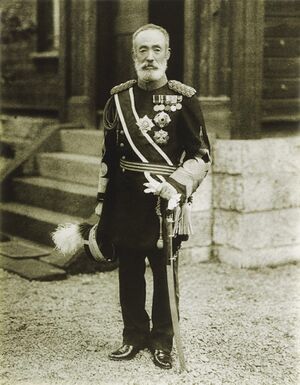
At the outbreak of the war, the Stoinian Corinian Defence Fleet was largely ordered to maintain a defensive position in Corinia while troops could be mobilised overseas following the demobilisation of Ezervulge. On October 17th however, Corinia would see its first conflict, ending the one month of waiting. The Imperialist fleet lead by Karnetvorian Admiral Vojkan Karanović consisted of roughly 42 and 31 Karnetvorian and Techanarean ships respectively. The joint task force was meant to cripple the Corinian Defence Fleet in a swift stroke. It would come face-to-face with multiple contingents of 65 ships of the Corinian Defence Fleet patrolling near the island of Taiping that belong to Stoinia. What ensued of the Battle of Taiping was a major Stoinian defeat as the sparse patrol detachments were picketed off one by one and swiftly outgunned by the Imperialist fleet. Mainly Stoinian screen ships were sunk, but ship losses included 10 cruisers, the battlecruisers HMS Milescu and HMS Reghea, and the battleship HMS Cetus. In total, the Stoinians had lost 52 ships with the Imperialists only lost 13 ships.
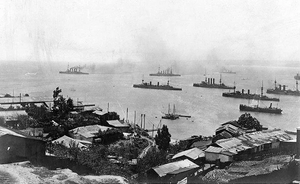
Following the Battle of Taiping, the Imperialist fleet believed it had destroyed the Corinian fleet and Admiral Vojkan Karanović in his pride decided to instil terror on Shai Kong before docking in its ports. As such, the Imperialist fleet came near the shore of Shai Kong earlier than what normal protocol would dictate. This would prove to be a mistake by the Imperialist fleet as the Shaikongers alerted the surviving elements of the Corinian Defence Fleet stationed in Carao. The most senior officer was Commodore Ryuk Dae-Jung. Scrambling the remaining 29 docked ships in Carao, Commodore Dae-Jung set out to defend Corinia from the Imperialists. As the First Naval Battle of Shai Kong started, Commodore Dae-Jung had the ageing dreadnought HMS Fujani position itself perpendicular to the coast and serve as the main battering ram while another squadron of screen ships would flank them from the sea, locking the Imperialist fleet from three sides. However, what truly tipped the scale of the battle was his use of aircraft carriers. HMS Takao, his own carrier was accompanied by two more light carriers HMS Veleta and HMS Vacares. As the aeroplanes were deployed out of reach from the Imperialist fleet, they dealt critical blows paired with the barrages from the rest of the Corinian fleet. The First Naval Battle of Shai Kong would become one of the first battles in which modern aircraft carriers proved their merit as a modern doctrine to pursue. Commodore Dae-Jung would lose only 3 destroyers while the Imperialist fleet of the remaining 59 ships was completely sunk. Admiral Karanović would not survive the battle and fail to inform the Imperialist forces of the tactics used by Commodore Dae-Jung.
In the following months, Commodore Dae-Jung fought off multiple attempts by Imperialist forces to conquer Shai Kong and Corinia, totalling 15 military engagements from October 1949 to June 1950. The defeat of the Imperialist forces was in large part due to the inadaptability of the Imperialist naval officers when faced with Commodore Dae-Jung's use of aeroplanes against which they were mostly ill-equipped. Nonetheless, the Corinian Defence Fleet valiantly continued to defend the Stoinian territory on Cordilia. Commodore Dae-Jung would be hailed a national hero for his achievements and be given the highest order of Stoinian military decorations. In addition, he was named the Lord Admiral of Corinia by King Mihai III, becoming the first Paeo-Garanian to receive the honour, gaining him much renown with the Shaikongers. His authority as Lord Admiral would also include the ships that would come to reinforce Corinia later on. However, Lord Admiral Dae-Jung would not rest his fate to stalled reinforcements and in accordance with the Governor of Shai Kong Aleroma Beverino, would start converting transport vessels into light aircraft carriers to bolster the Defence of Corinia while awaiting for the larger Stoinian naval reinforcements after the Second Naval Battle of the Brevero Sea.
Operation Nighthawk (1949)
The Karnetvorian and Techanarean Imperial Navy would, however, be able to swiftly conquer the port cities of Sulina, Vudesque and Lonfar in Actora from Stoinia under the command of Admiral Hakin Myaunalki who sieged the cities on the night of October 28th. Operation Nighthawk (Karnetvorian: Операция Ястреб) as the military offensive was called, was another early decisive Stoinian defeat and morale booster of Sub-Capricorn Imperialist forces. The military operation Although the Stoinian fleets were easily outgunned and sunk, the local populace continued to fight the occupation. However, the occupation under Admiral Hakin Myaunalki would prove a reign of terror which would be cemented in the conscience of the port cities which would eventually lead to the handover of the cities in 1975. The port cities would however be liberated by Lord Admiral Dae-Jung in August 1952 following the consolidation of the Stoinian Royal Navy in the Sub-Capricorn territories on Cordilia and Crabry.
Supra-Capricorn Theatre (1949-1952)
Preliminary Imperialist offensives in the Central Islands (1949-50)

Stoinia was in a precarious position as it now was at war with Karnetvor, Techganet, Ubesii, Father States and the Gianlucian Empire. Although allied with Sedunn, Termina and Ryccia the Stoinain Royal Navy despite its size was forced to spread over multiple fronts in the Mediterranean, Sub-Capricorn and Supra-Capricorn. Nevertheless, Prime Minister Stegăroiu vowed to protect the Stoinian territories of Carraca, Pētea and the Lile Uile Islands as well as guaranteeing the independence of Conaro. It would see the first Imperialist attempt to conquer the strategic Central Islands under Admiral Radomir Zorić who was an old friend of Fleet Admiral Alonso Barreto, the Commander of the Pacific Fleet. A large fleet, 122 strong, set sail from Tasternine and arrived in the Brevero Sea on October 15th 1949. There it clashed with the Stoinian Royal Navy under Fleet Admiral Alonso Barreto's Pacific Fleet in the First Naval Battle of the Brevero Sea. The battle was a pyrrhic Stoinian victory with many losses on both sides with 65 and 72 Allied and Imperialist ships sunk. One of the sunken ships was the HMS Proteus, a prominent battleship of the Stoinian Royal Navy and considered by some as the pride of the battleships. The First Battle of the Brevero Sea would prove the first strike in a one-two punch. However, with the Mediterranean Sea being threatened by Tekarai, Stoinia committed a large portion of its navy to help Sedunn to neutralise the Tekarian naval threat, leaving the Central Islands largely undermanned for subsequent offensives.
In December 1949, continued raids and harassment campaigns by the Karnetvorian Imperial Navy, the Stoinian Royal Navy had been severely depleted of its strength. Sedunn's and Stoinia's navies were strained from the previous battles and patrolling. Both nations needed time to recover and reinforce their spread-out navies. Additional ships were ordered on a massive scale in both Sedunn and Stoinia. Despite this, naval warfare was remarked to have been relatively tame compared to other naval battles due to the brotherly bond between the two naval commanders, often saving enemy sailors from drowning. This was a rare participation of a Stoinian officer joining in the Gentlemen's War as both Admiral Radomir Zorić and Fleet Admiral Alonso Barreto had forged a bond in a military training exercise prior to Karnetvorian imperialism between Karnetvor, Sedunn and Stoinia. Fleet Admiral Alonso Barreto would, however, prove to be an exception to this rule as most Stoinian officers preferred to incorporate Bellica Incessante tactics which emphasised creating as many military casualties as possible.
Imperialist invasion of the Central Islands (1949-1950)
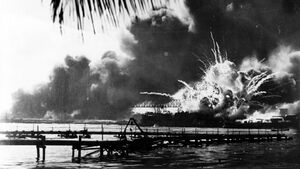
As the situation stabilised in Termina by February 1950, Karnetvor still wasn't in full control yet as the capital was not in their hands yet. Following its surprise attack on Kanaka Harbour in the Lile Uile Islands on January 14th, the Imperialist forces of Karnetvor, Techganet and Tekarai under the command of Admiral Radomir Zorić engaged Fleet Admiral Alonso Barreto in the Second Naval Battle of the Brevero Sea. This time the Imperialist forces had gained the upper hand and landed on the Siculite Islands as well as Pētea and the Lile Uile Islands. Not even the native stronghold of the Garāori in the Carracan archipelago, Matakana Island, was spared. In a month, they defeated the Ryccian defenders, but the Ryccians and the natives fought a guerrilla campaign, that was not fully defeated until April. Similarly, the Stoinians and native islanders held valiant defences for a couple of months but were outnumbered in the end before resorting to sleeper cells. Karnetvor officially annexed the islands, but the Second Naval Battle of the Brevero Sea had seen no decisive victor in the Central Islands and a stalemate on the Carracan main island followed. However, the Principate of Conaro decided to join the war effort through the Conegasque Expeditionary Corps as Stoinian officers had trained Conegasque volunteer troops since the beginning of the war. Although only adding roughly 24,000 troops to the larger war effort, the Conegasque Expeditionary Corps consisted of 5.7% of the Conegasque population and would become one of the most lethal military units throughout the war.
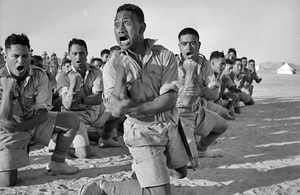
Seeing their ancestral islands being occupied and their peoples abused instilled a fire within the Garāori, Islander and Pētean Army Corps' soldiers who mostly comprised of the natives of the Central Islands. Under Lieutenant-General Paul Celăreanu, GIPAC forces would cross the Raukawa Strait between Kihei and the Carracan island on the dawn of May 5th 1950. This signalled fellow Gipac sleeper cells who remained undercover on other islands to attack as well. The Imperialist forces had no knowledge of these prior sleeper cells as they hid most of their equipment in dense forests and attacked by night. This lightning attack by the Gipacs instilled terror within the stationed Imperialist forces as the Gipacs engaged zealously in surgical precise guerilla warfare utilising the knowledge of their native lands. Within two days, Kihei was liberated and the Gipacs performed a legendary haka dance which was seen by distant Imperialist naval forces who chose not to reclaim the city after seeing the dance. This would bring in a response from the Imperialist forces which Allied forces exploited in the Third Naval Battle of the Brevero Sea on May 15th. Fleet Admiral Alonso Barreto lead the Allied Pacific Naval Task Force and after conferring with Lord Admiral Dae-Jung, he heavily utilised the newly built Stoinian aircraft carriers to exploit the weaknesses of the Imperialist navies. This proved to be the decisive doctrine that lead to the defeat of the Imperialist forces commanded by Admiral Radomir Zorić. Admiral Radomir Zorić, having been decisively defeated, raised his white flag and surrendered to Allied forces. Recognising the ship, Fleet Admiral Alonso Barreto set course to board the vessel and upon docking with the battleship of Admiral Radomir Zorić, HMS Corisia, said the following:
"My old friend, you have bested me. I yield now in honour of our old friendship which hasn't corroded throughout our battles. Before you bring me to your tribunals, I must commend your troops. In particular these Gipacs of yours. I have seen from afar what these brave men have done alongside tales which left my men quivering. Truly marvellous warriors who we've had the misfortune to be on opposing sides with. If I want to keep an island I'd ask Admiral Dae-Jung, but if I want to conquer an island, I'd beg for the Gipacs. Their bravery has proven the error of my government's policies which have never sat right with my conscience. Such bravery shouldn't be caged. You have beaten me both tactically and morally. A sweeter victory I could not wish upon my enemy nor my old friend."—Admiral Radomir Zorić upon surrendering to Fleet Admiral Alonso Barreto after the Third Naval Battle of the Brevero Sea.
In the following months, the GIPAC forces spearheaded the liberation of Government Island, Pētea and the Lile Uile Islands, gaining much renown and admiration from both Allied and Imperialist forces. Similarly, the Conegasque Expeditionary Corps achieved reputable achievements to a lesser extent as well in this campaign, though Imperialist forces were known to surrender upon sighting GIPAC forces. These battles established the Garāori, Islander and Pētean Army Corps as one of Stoinia's most elite military units. Despite liberation efforts, the Imperialist forces on the Sicullite islands remained heavily fortified and isolated. Instead of risking high casualties, Allied forces decided to weed out the Siculites over a longer period of time by demoralising the Imperialist forces. Making it a unique stronghold within the Central islands throughout the war. This campaign would continue until the liberation in May 1953 by Ryccian and Sedunnic forces. The Karnetvorian lead Imperialist forces would however dare sporadic efforts to pierce through the Allied blockade of the northern Central Islands to resupply the Siculites. However, the Imperialist encryption coding system called Zagadka (Karnetvorian: загадка), would be decrypted by the Litanian mathematician, computer scientist and cryptanalyst Abilio Torrado which prevented any more successful Imperialist advancements into the Central Islands. Typically by intercepting the messages and deploying Stoinian aeroplanes from its aircraft carriers to sink Karnetvorian warships without necessarily revealing they cracked the Zagadka Code.
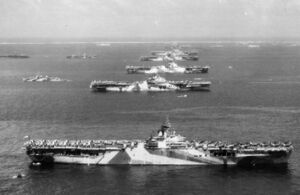
As the Stoinian Royal Navy recuperated from the Third Naval Battle of the Brevero Sea, Fleet Admiral Alonso Barreto was promoted to Lord Admiral of the Pacific and unified multiple national fleets, including the remnants of the Cadisian Navy, under one command. Bolstered by the numerous offensives in the Central Islands, the Ikaranarean Father States deployed the Narussian Navy to conquer the strategic islands after the Karnetvor-lead forces had failed to do so. In addition, Ikaranarean leadership was eager to prove its naval dominance following the Stoino-Ikaranarean naval arms race. With modern warships and a new doctrine, the Narussian Navy engaged the Stoinian Royal Navy on June 16th in the Fourth Battle of the Brevero Sea.
One of the first battles which saw aircraft carriers fight against each other.
Operation Sovereign - Stoinian invasion of the Father States (1951)
<--Prior to Operation Sovereign (Tarnese: Operațiunea Suveran), Stoinia had decided it needed a nearby airport for the battleplans of Sovereign. Consequently, the Stoinians invaded Hazelia in March 1951-->
Landed in Cadíz September 24th 1951. Conegasque Expeditionary Corps General Iuliu Măcărescu
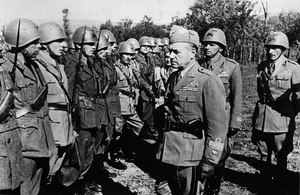
Operation Trinitas (1952)
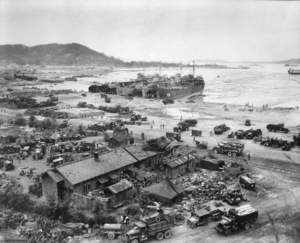
Despite global tendencies, the Supra-Capricorn saw a major development with a Stoinian amphibious campaign in the heart of the Ikaranarean states through Operation Trinitas. General Iuliu Măcărescu
Central Bailtemmic front (1949-1951)
<--Sallodesian annexation of Neu Katzberg & Neu Faburg, Fauderland puppet Detroxia -> Sallodesian front with Detroxian & Regan resistance help-->